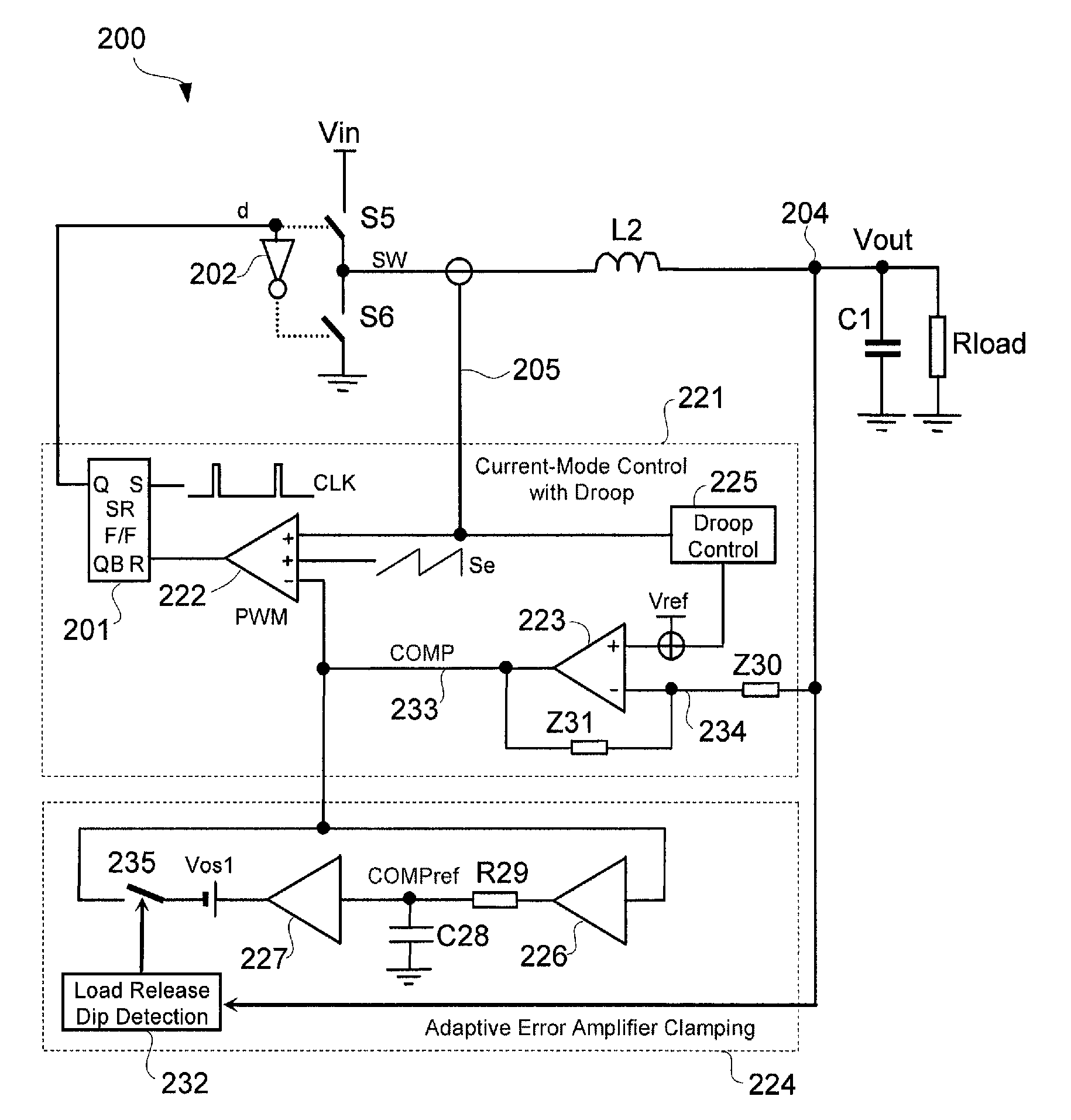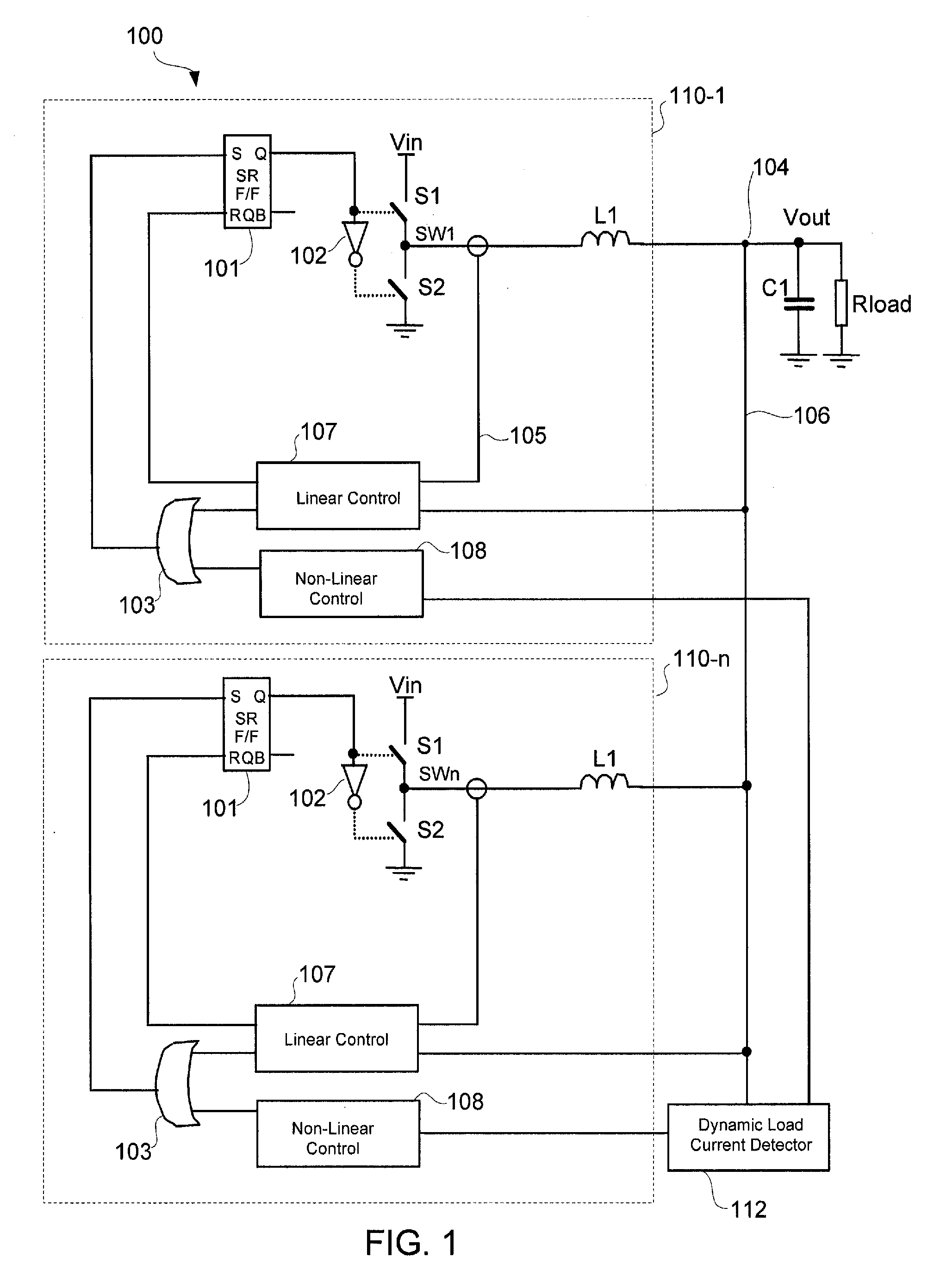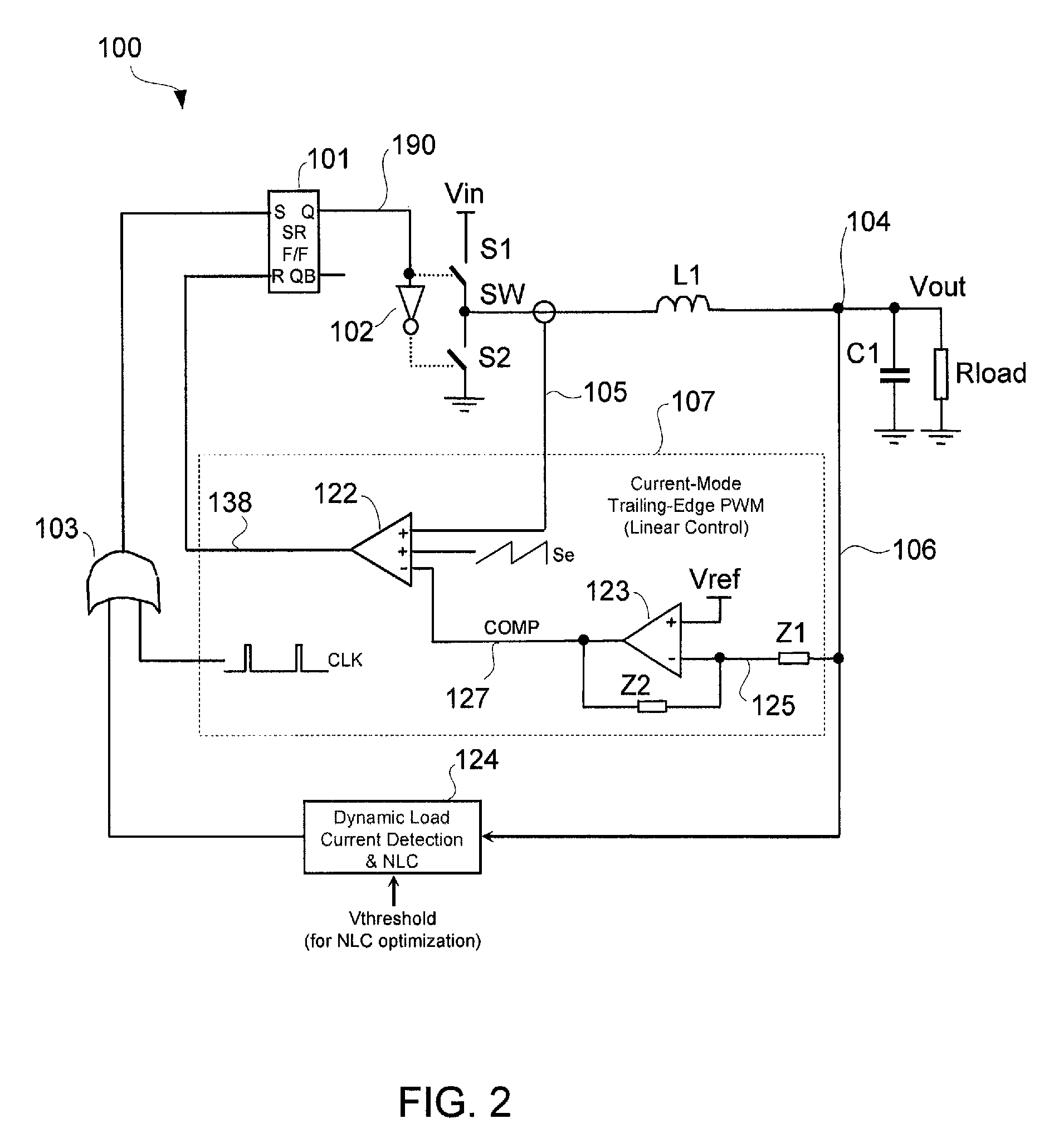Non-linear control techniques for improving transient response to load current step change
a step change and load current technology, applied in the field of electric circuits, can solve the problems of regulators not being able to respond fast, large step change in load current within a relatively short period of time, not always the case in real world conditions, etc., and achieve the effect of limited linear control bandwidth
- Summary
- Abstract
- Description
- Claims
- Application Information
AI Technical Summary
Benefits of technology
Problems solved by technology
Method used
Image
Examples
Embodiment Construction
[0030]In the present disclosure, numerous specific details are provided, such as examples of circuits, components, and methods, to provide a thorough understanding of embodiments of the invention. Persons of ordinary skill in the art will recognize, however, that the invention can be practiced without one or more of the specific details. In other instances, well-known details are not shown or described to avoid obscuring aspects of the invention.
Non-Linear Control
[0031]Load current is the electrical current drawn by the load from the regulator. For purposes of the present disclosure, a load current has a high slew rate when it has a slew rate of around 100 A / μs and above, and has a high repetition rate when its repetition rate is around 100 kHz and above. A load current step change is a fast change in load current. A step change may be a step-up change where the load current rapidly changes from low to high, or a step-down change where the load current rapidly changes from high to l...
PUM
 Login to View More
Login to View More Abstract
Description
Claims
Application Information
 Login to View More
Login to View More - R&D
- Intellectual Property
- Life Sciences
- Materials
- Tech Scout
- Unparalleled Data Quality
- Higher Quality Content
- 60% Fewer Hallucinations
Browse by: Latest US Patents, China's latest patents, Technical Efficacy Thesaurus, Application Domain, Technology Topic, Popular Technical Reports.
© 2025 PatSnap. All rights reserved.Legal|Privacy policy|Modern Slavery Act Transparency Statement|Sitemap|About US| Contact US: help@patsnap.com



